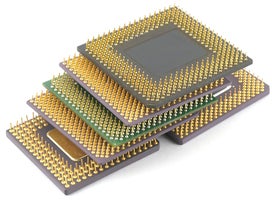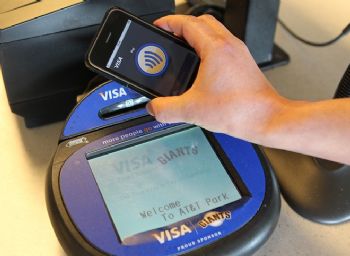Tech Trends in 2012 by batteryfast.co.uk
From data-only cell phone plans to HTML 5, these ten advancements are ready to go mainstream in the year to come.
We’re living in an exciting time in technology: From consumer products such as phones and tablets to the way your home computer accesses the Internet, everything is changing, and mostly for the better. We predict that next year the following ten developments will change the way you interact with the digital world.
1. Dual-Core Processors Become the Norm in Smartphones
In 2011, the Motorola Atrix and the Droid Bionic were the first commercially popular smartphones to sport dual-core processors. In the fall, Apple’s iPhone 4S followed suit--and now it seems unlikely that any smartphones unveiled in 2012 will be competitive unless they can offer the same processing power that Apple’s phones do.
 As a result, you should expect to see a surge in dual-core mobile devices. ARM executive James Bruce, whose company licenses the designs of chips that find their way into almost every mobile device in the world, said in a May interview that dual-core processors would be a huge part of making smartphones not just powerful but also battery-efficient.
As a result, you should expect to see a surge in dual-core mobile devices. ARM executive James Bruce, whose company licenses the designs of chips that find their way into almost every mobile device in the world, said in a May interview that dual-core processors would be a huge part of making smartphones not just powerful but also battery-efficient.
“If you look at handsets today, we’ve seen dual-core handsets reduce power consumption,” he says. For example, if you're sending a text message, dual-cores have the potential to effectively streamline the lower-power functions of the phone through one core, while reserving the other core for more power-intensive functions, like gaming or navigation."
And don’t expect chip development to stop at two cores. In December, Nvidia announced its firstquad-core processor for tablets and smartphones, the Tegra 3.
2. Optical-Disc Drives Disappear From New Laptops
If you could download a movie in 2 minutes at any airport or coffee shop, or access hundreds of family photos from any network connection, how often would you use your laptop’s optical drive? For most people, the answer is "not often."
 That’s why, in 2012, you’ll see fewer laptops with optical drives. And the superlight classes (such as MacBook Airs and Ultrabooks) won't be the only ones abandoning them--larger-screened portables will, as well.
That’s why, in 2012, you’ll see fewer laptops with optical drives. And the superlight classes (such as MacBook Airs and Ultrabooks) won't be the only ones abandoning them--larger-screened portables will, as well.
Ali Sadri, president of the Wireless Gigabit Alliance, which is working to propagate 7-gbps wireless on the 60GHz band of the spectrum, says that faster wireless will certainly change the way that laptops look, for good. “Multi-gigabit connectivity gives us all sorts of uses. Suddenly you don't need to have all these bulky devices. A very light laptop doesn't have room for an HDMI cable port, or a docking station.”
In 2012, regular-size laptops will be able to ditch their disc drives--and even many of their ports--without losing too much functionality. MacBook Airs don’t include optical drives, and larger MacBooks will likely follow suit this year. Laptops from other manufacturers, such as Asus, Dell, and Toshiba, will join the trend. Of course, some laptops will retain drives, but in 2012 new laptops with optical-disc drives will become harder to find.
3. Data-Only and Reduced-Voice Cell Phone Plans Proliferate
 You probably spend way more time sending email and checking Facebook updates than you do making calls on your cell phone these days. And cell phone carriers are taking notice. In 2012, when you’re shopping for a phone plan, you’ll see data plans emphasized and calling minutes marginalized. Already, T-Mobile and Walmart have partnered to create a prepaid plan that offers 5GB of data and a measly 100 voice-calling minutes for just $30 a month.
You probably spend way more time sending email and checking Facebook updates than you do making calls on your cell phone these days. And cell phone carriers are taking notice. In 2012, when you’re shopping for a phone plan, you’ll see data plans emphasized and calling minutes marginalized. Already, T-Mobile and Walmart have partnered to create a prepaid plan that offers 5GB of data and a measly 100 voice-calling minutes for just $30 a month.
Patrick Miller tested the plan, doing most of his calling via VoIP on Skype’s app. Although his calls sometimes suffered from lag or occasionally cut out, ultimately the voice quality and reliability of his VoIP calls were no worse than on calls he made through a traditional cellular voice plan.
And new carrier Republic Wireless announced a plan that charges just $19 a month for unlimited data, text, and calling. The plan assumes that you’ll spend most of your time using Wi-Fi networks in your home, office, or around town, but provides cellular access for those occasions when you’re not around a hotspot. Use the cellular service too much, and you get kicked out of the Republic Wireless plan.
4. Facebook Accounts Become Necessary to Do More Stuff on the Web
Want a Spotify account? You’ll need to get a Facebook account first. When Facebook announced its partnership with Spotify in September 2011, the big objection that most people had to the partnership was that everyone could see what songs you were listening to, no matter how embarrassing your musical choices were.
Since then, Facebook and Spotify have decided to allow you to make your sharing private. (Or, for some people, secret. There’s a difference.) But one thing that Facebook and Spotify have not backed down on is the requirement that all new Spotify users sign in with Facebook before they can access any free tunes.
Turntable.fm is another new music-sharing service that requires the user to log in with a Facebook account--do so, or take a hike. While many websites aren’t quite so stringent with their login demands, it’s becoming more and more common to see “Sign in with your Twitter or Facebook account!” in big letters across a website’s login area. Only in the small print can you find the option to make an account without linking to your social media pages.
In 2012, it’s safe to assume that you’ll see more of this. The setup is good for small sites--they can largely weed out fake accounts and abusive users with the filter of a Facebook login, all while making sure that genuine customers don’t forget their login information. And the arrangement is good for Facebook--it can keep track of the sites that users visit, and encourage them to share more thoroughly (which is better for Facebook’s ad sales).
5. NFC Facilitates Mobile Payments, Peer-to-Peer Networking
 Imagine tapping your phone to a receiver at a register, and instantly paying for an item without fumbling for your wallet. Or getting into a movie theater with a similar tap of your phone. Or being able to load your transit card onto your phone, using a simple tap to deduct money for every trip on the subway.
Imagine tapping your phone to a receiver at a register, and instantly paying for an item without fumbling for your wallet. Or getting into a movie theater with a similar tap of your phone. Or being able to load your transit card onto your phone, using a simple tap to deduct money for every trip on the subway.
All of that is already possible with the help of near-field communication chips, which transfer small amounts of data through a short-range, low-friction connection.
Currently, you can buy the Google Nexus S phone, which carries an NFC chip and the Google Wallet companion app for syncing your credit cards to your phone and making mobile payments at participating vendors. Meanwhile, RIM is baking NFC chips into newer phones such as the BlackBerry 9900, and recently it introduced Tag, a RIM-specific feature that allows BlackBerry users to transfer contact information and documents.
The latest version of Android, Ice Cream Sandwich, is built to let app developers take advantage of the many uses for NFC, such as setting up peer-to peer connections between phones simply by tapping the phones' backs to each other. So without a doubt, in 2012 you’ll see more phones with these chips built into them, as well as more apps that employ the technology.
Read More:
|
|
